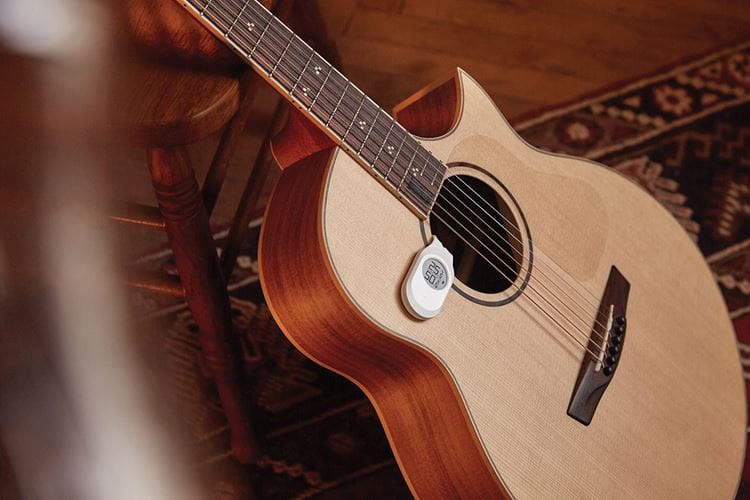Audio
Unleash the full potential of Bluetooth LE Audio with Nordic

Nordic Semiconductor today announces that Qingping, a Beijing, China-based smart technology company, has selected Nordic’s nRF52832 Bluetooth® Low Energy (Bluetooth LE) System-on-Chip (SoC) to provide the core processing and wireless connectivity for its ‘Lee Guitars Bluetooth Thermo-Hygrometer’ sensor device.
When magnetically attached to the panel near the sound hole of a guitar or another wooden instrument like a violin, the 131 by 37 by 12.4mm device continuously monitors the temperature and humidity levels inside and outside the instrument. It then reports status changes back to the owner to help prevent the guitar deforming, cracking, or debonding over time. Effective guitar care (especially for acoustic guitars) requires the instrument to be kept at proper temperature and humidity levels, particularly when in transit. The suitable temperature for storing wooden musical instruments is 20-25°C, within a humidity range of 40-50 percent. Drastic fluctuations in temperature or humidity, even for short durations, can have serious consequences such as warped parts, ‘fret sprout’, and failed bridges.

The Lee Guitars Bluetooth Thermo-Hygrometer employs Nordic’s nRF52832 SoC as the main microprocessor for controlling its temperature/humidity sensors and algorithms. The nRF52832 SoC combines a powerful 64MHz, 32-bit Arm® Cortex® M4 processor with floating point unit (FPU), with a 2.4GHz multiprotocol radio (supporting Bluetooth 5.2, ANT™, and proprietary 2.4GHz RF protocol software) featuring -96-dB RX sensitivity, with 512kB Flash memory and 64kB RAM.
Using the Bluetooth LE connectivity provided by the Nordic SoC, the sensor-based information is relayed to the ‘Lee Guitars’ and/or ‘Qingping+’ apps on the user’s Bluetooth 4.0 (and later) smartphone. From the Android- and iOS-compatible companion apps, users can view real-time temperature and humidity readings presented as statistical graphs, receive notifications when the levels exceed the standard range, and synchronize the local historical data from the last 30 days. When the device is paired with a ‘Qingping Bluetooth Gateway’, users can remotely monitor the data or receive the push notifications from any location.
The Lee Guitars Bluetooth Thermo-Hygrometer uses CR2032 button batteries to provide battery life of around eight months before replacement, thanks in part to the ultra low power characteristics of the Nordic SoC. The nRF52832 has been engineered to minimize power consumption with features such as the 2.4GHz radio’s 5.5mA peak RX/TX currents and a fully-automatic power management system that reduces power consumption by up to 80 percent compared with Nordic’s nRF51 Series SoCs.
The nRF52832 SoC is supplied with Nordic’s S132 SoftDevice, a Bluetooth 5.2-certifed RF software protocol stack for building advanced Bluetooth LE applications. The S132 SoftDevice features Central, Peripheral, Broadcaster and Observer Bluetooth LE roles, and supports up to twenty connections.
“There were a number of key technical characteristics behind our decision to use Nordic’s nRF52832 SoC for the Lee Guitars Bluetooth Thermo-Hygrometer,” says Bin Du, Co-Founder/COO at Qingping. “These factors include the Arm Cortex M4F processor supporting floating point operations, the generous Flash and RAM memory allocation to meet the application’s demands for storing historical sensor data, the software architecture enabling real-time debugging and simulation, and power consumption offering the advantages of 5.3mA peak current in TX (0dBm) and 5.4mA peak current in RX.
“The feature-rich Nordic Software Development Kit [SDK] was also a key factor in our decision. The software API is clear and well layered, and the function routines are detailed. These convenient advantages combined to help us complete the development work quickly.”
Unleash the full potential of Bluetooth LE Audio with Nordic